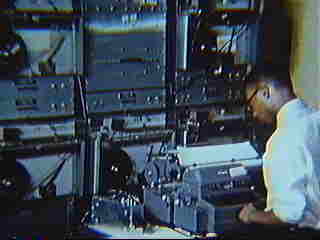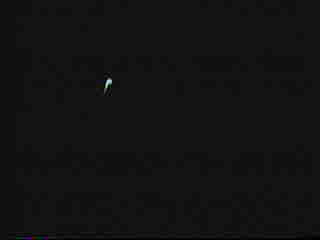 220
220 221
221 222 Note
222 Note





223, 224, 225, 226, 227, 228
 220 220 |
There are two main output devices. One is the Flexowriter equipment, which produces either a typewritten page |
 221 221 |
or a punched paper tape which may be later used to produce a printed page. |
 222 Note 222 Note |
Magnetic tapes can be used to record information at high speed for later printing. This increases efficiency, since the printing can be done while the computer is engaged on another problem. |
      223, 224, 225, 226, 227, 228 |
The second output medium is a cathode-ray oscilloscope. Whirlwind was long the only digital computer to use this rapid means for graphical or numerical recording. Here, the oscilloscope is recording point by point the solution to a very simple problem: the differential equations representing the motion of a ball bouncing on a horizontal plane--and, falling through a hole. |
The MIT Museum has kindly granted permission for me to reproduce these extracts from the 1953 film on MIT Project Whirlwind,"Making Electrons Count." The permission is governed by an agreement between Daniel P. B. Smith and the MIT Museum, and covers publication at this Web site only. Individuals may view this material at this Web site, http://world.std.com/~dpbsmith/. Any other use requires permission from the MIT Museum, 265 Massachusetts Avenue, Cambridge, Massachusetts 02139-4307.
The original film credits contain no date or copyright notice and reads, in full:
The Digital Computer Laboratory of the Massachusetts Institute of Technology Presents "Making Electrons Count: Solving a Problem on M.I.T.'s Electronic Digital Computer 'Whirlwind I.' Sponsored by: Office of Naval Research. Physicist played by Dean N. Arden. Script by Edwin S. Kopley. Photographed and Directed by Lloyd G. Sanford.
--Daniel P. B. Smith, http://world.std.com/~dpbsmith/